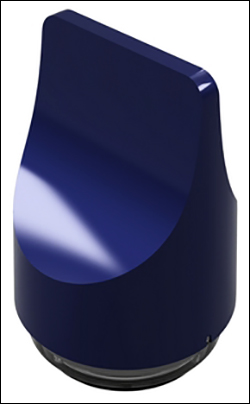Sep 13, 2017CPqD, located in Campinas, Brazil, has announced a solution that uses public lighting as an Internet of Things (IoT) platform for smart cities. The project is the result of a partnership with Exati Tecnologia, a Curitiba-based company that offers a platform for Internet Protocol (IP) management currently used in more than 200 Brazilian cities.
The Embrapii CPqD unit and Exati have created a gateway that manages a wireless communication network, to which various devices for smart cities can be connected, according to Dennis Weis Naressi, Exati's CEO. "In conjunction with Exati's IP management application," he says, "the new solution is an intelligent network of public lighting and other services."
This development follows a trend already observed by RFID Journal, in which IoT platforms begin to see lighting systems as a smart and practical outlet to enable the connectivity of devices (see Smart Lamps Will Change the World [NOTE: This article is in Portuguese, but can be translated into English]).
Naressi says that the modernization of public lighting systems, which has been taking place throughout Brazils, brings a great opportunity for municipalities interested in adhering to the concept of smart cities. After all, the same connectivity infrastructure used for the tele-management of public lighting (IP) can also be used by other IoT applications that make cities smart.
Among the advantages of the product, Naressi says, are its compact size, the easy installation and the low cost of acquisition and maintenance. "Unlike current solutions, which are installed in buildings, towers or poles and require specialized teams for operation," he states, "this new product can be installed directly in the luminaires by any electrician."
Juliano Bazzo, CPqD's systems and intelligence manager, emphasizes three aspects that differentiate the solution: the wireless communication module, which can reach an area of more than 1 kilometer or several blocks of a neighborhood; the telepresence module's ability to function as an access point for Bluetooth Low Energy (BLE) sensors scattered throughout the city, such as intelligent traffic lights, parking sensors and location wristbands; and the routing protocol. "With this," Bazzo says, "each IP point becomes a platform to provide various services that can improve the lives of citizens and bring other sources of resources to the companies."
Another important highlight of the solution is the possibility of integration with the open platform for the IoT, developed by CPqD within an open innovation project—involving other institutions and companies—supported by the Fund for the Technological Development of Telecommunications (Funttel) Of the Ministry of Science, Technology, Innovation and Communications, via FINEP. "This integration allows us to accelerate the development of applications for smart cities," Bazzo states.
Exati itself, which will be responsible for manufacturing and marketing the new product, has already integrated its solution into the IoT platform and expects to use it in the smart-city scenarios, taking advantage of the telepresence module's ability to communicate with the diversity of sensors used, as well as its intended applications, throughout the coming years. The project for this innovative remote management module resulted in a patent application, which was deposited with Brazil's National Institute of Industrial Property (INPI) in July of this year.


